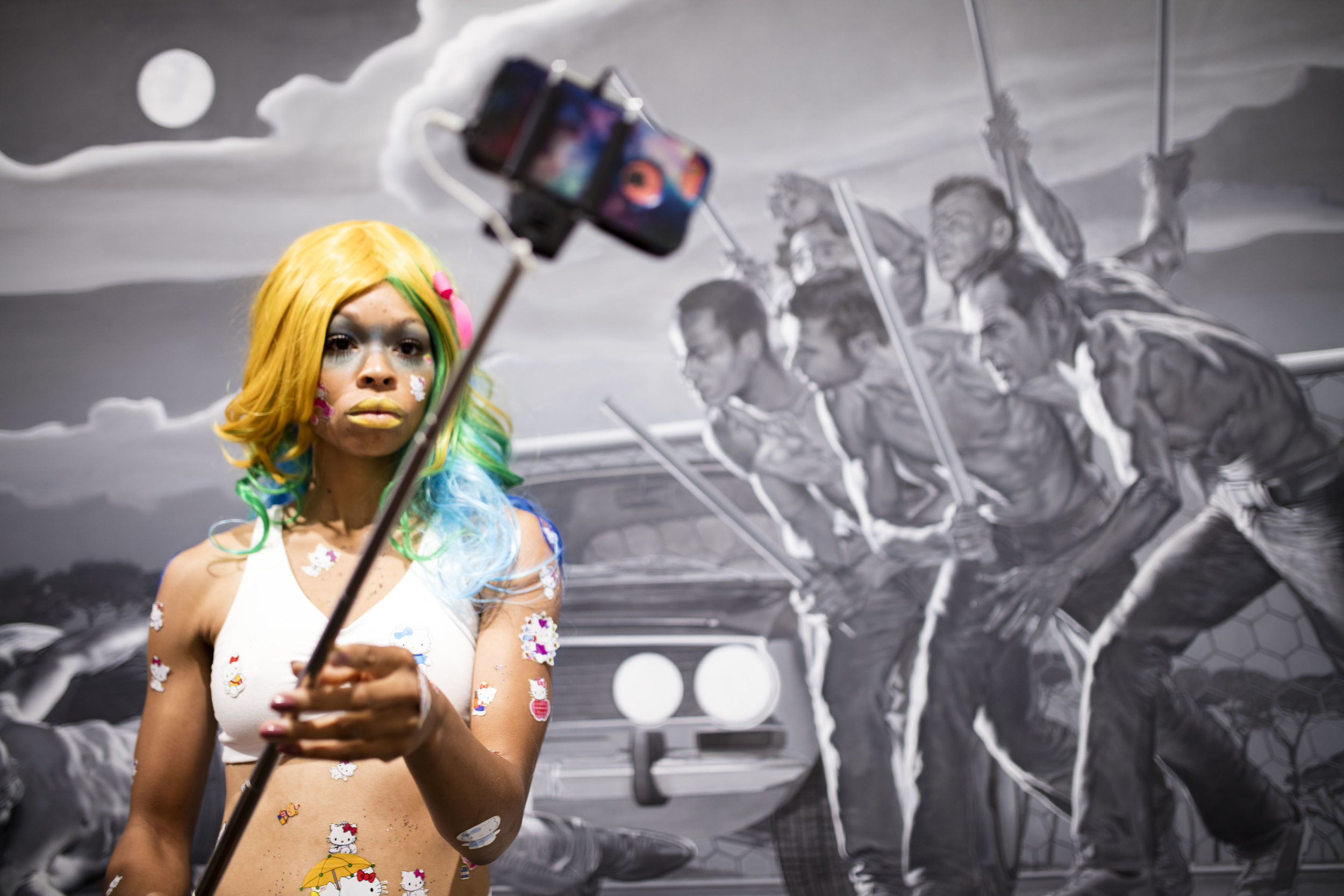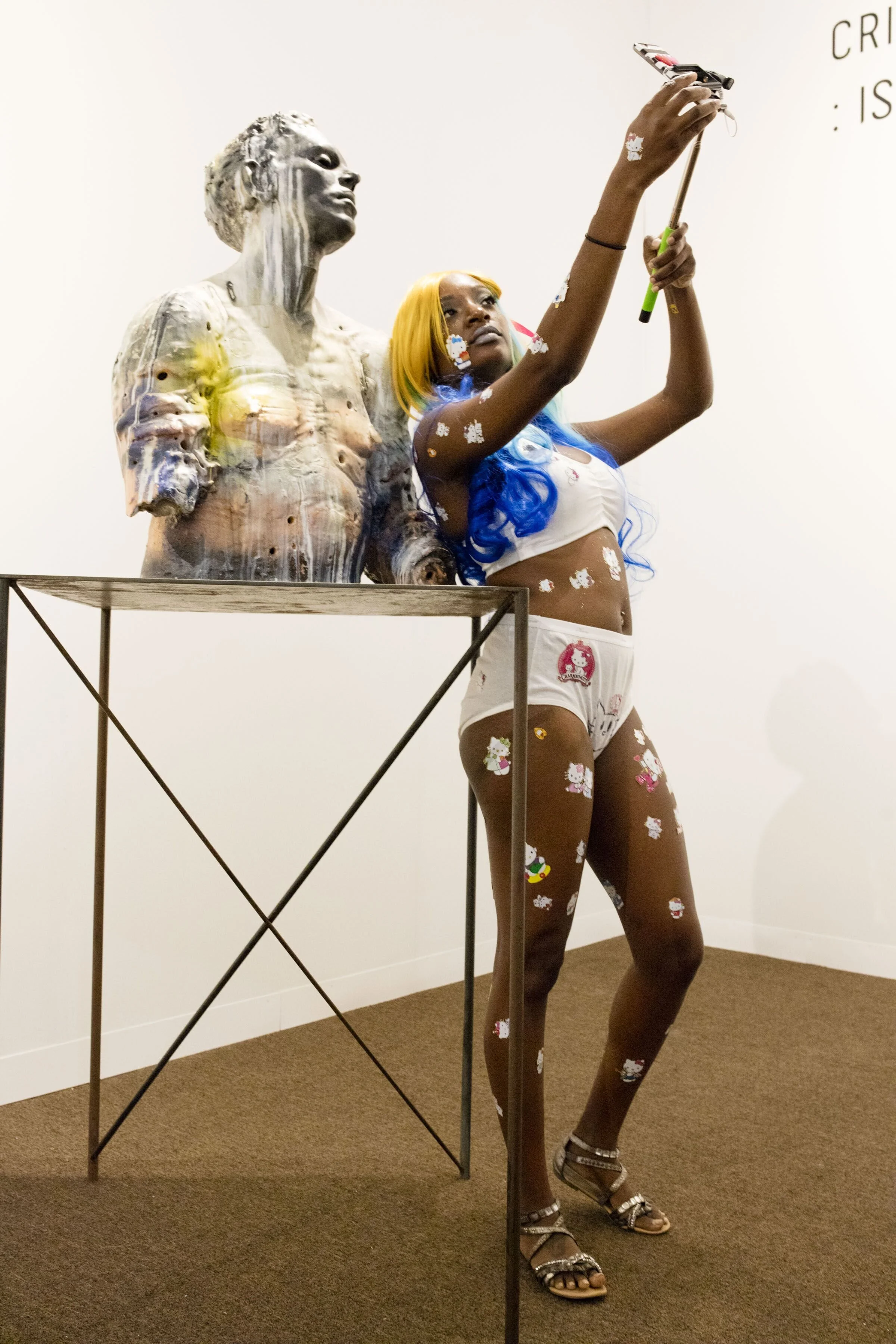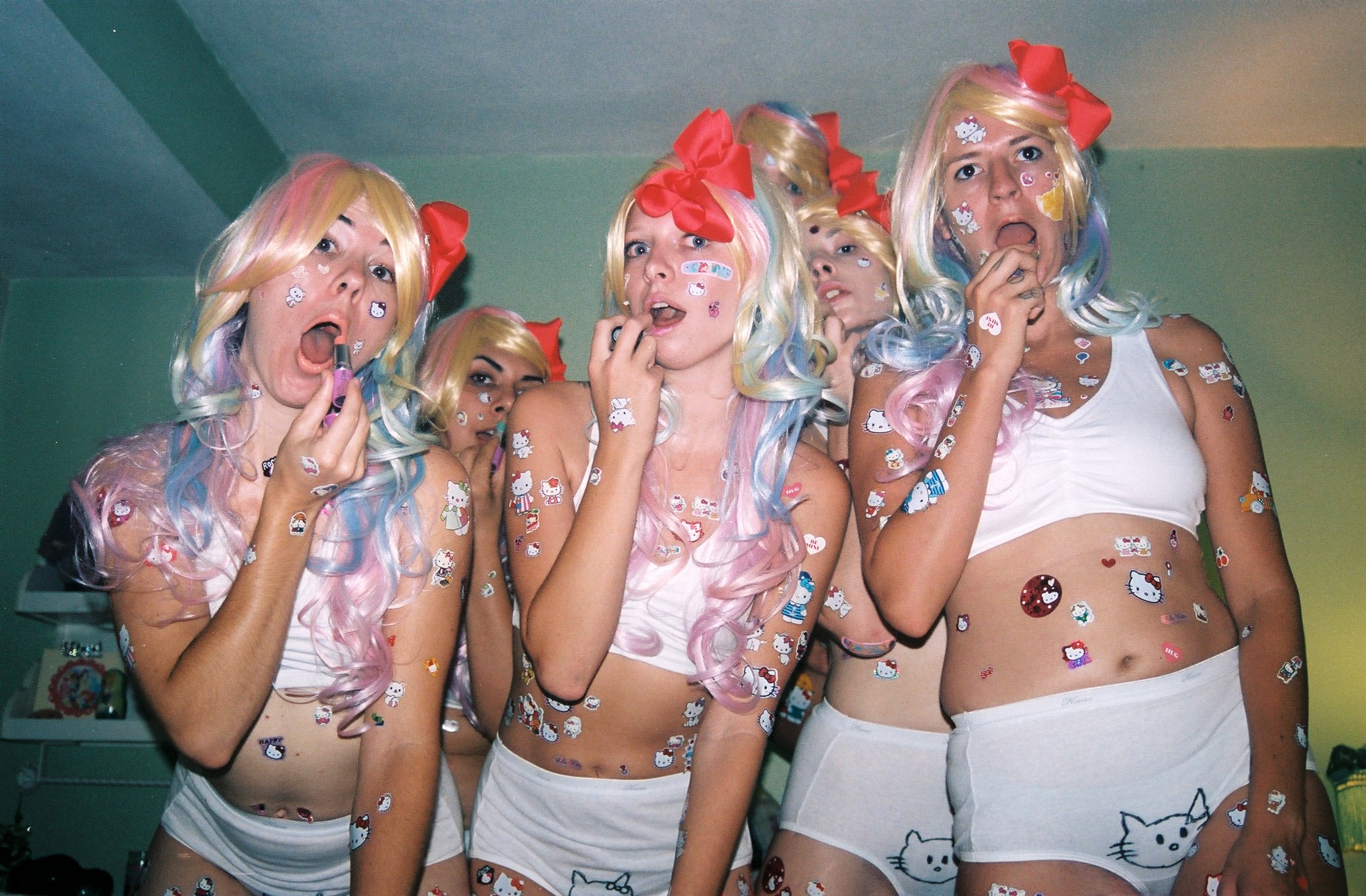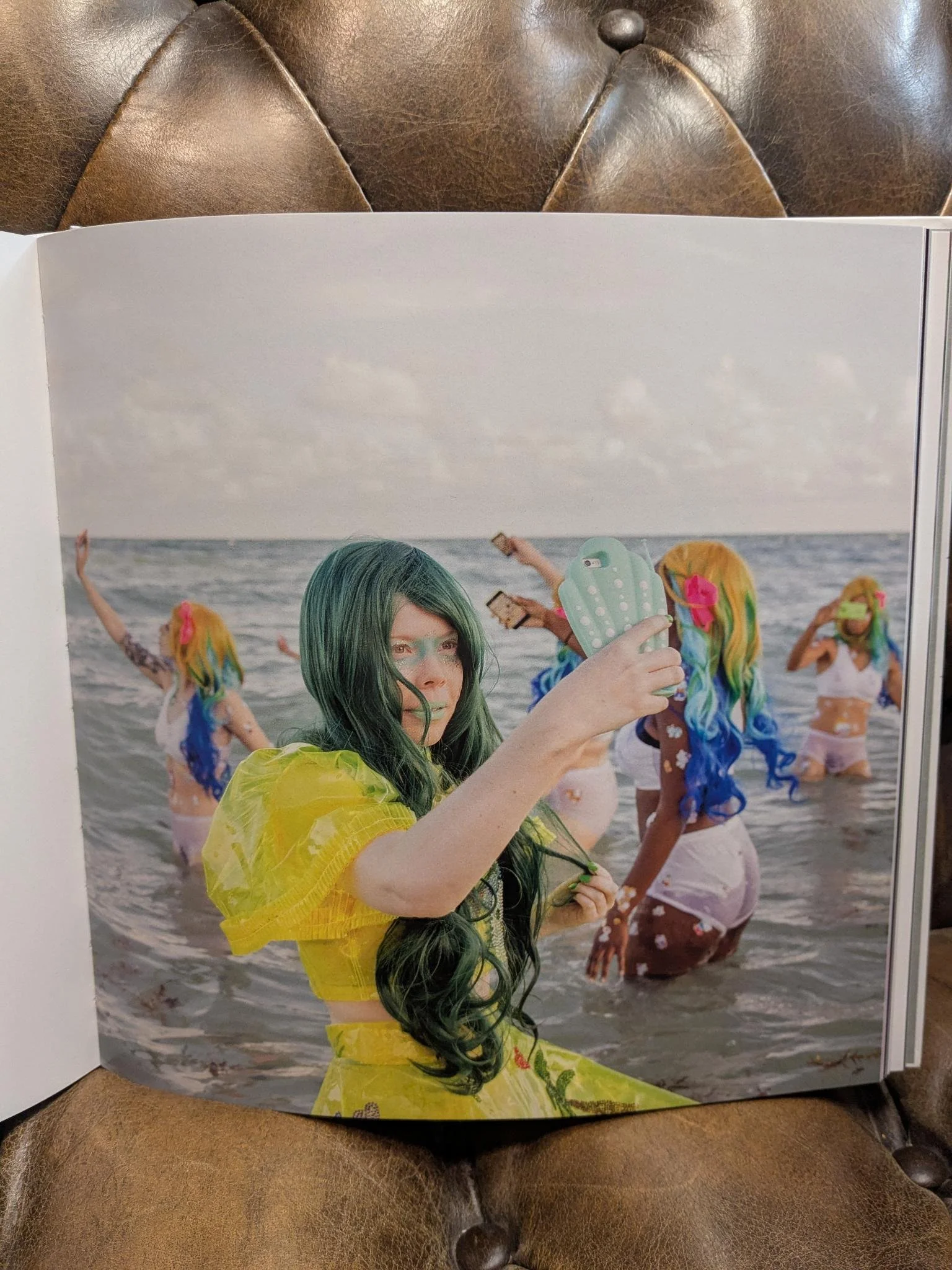Hello Selfie Miami
Kate Durbin’s Hello Selfie is a performance about gender, self-objectification, and the selfie phenomenon. First performed for Perform Chinatown in Los Angeles (2014), and with a visual aesthetic informed by Tumblr culture of the time, the piece consists of performers covered in hello kitty stickers taking selfies in a public space for an hour straight. They uploaded the selfies in real time to a FB event wall, in the first performance artwork to happen both IRL and on social media simultaneously. Durbin’s artwork was also the first piece to explicitly explore the contemporary selfie phenomenon as a phenomenon.
In meatspace, the performers ignored the IRL audience in the spirit of what Durbin calls "passive aggressive performance art." The IRL audience became a part of the piece by taking their own selfies within the space of the performance.
The piece was subsequently performed in Union Square NYC with Transfer Gallery (2014), and in Miami with Transfer Gallery and Kelani Nichole for the Pulse Art Fair (2015), commissioned by Helen Toomer.
Hello Selfie Miami at the Pulse Art Fair
The fourth iteration, Hello Selfie Men (2015), was performed with Arts Queensland in Australia with men performers.
Durbin's Hello Selfie documentation has been shown in two solo shows with Kelani Nichole’s Transfer Gallery NY, and in group shows at Haifa Museum in Israel, Exsquisite Corpse in the UK and Berlin curated by Sarah Faraday, The Wrong Biennale curated by Kamilia Kard, Body Anxiety curated bt Jennifer Chan and Leah Schrager, upfor gallery, Peer to Space in Berlin curated by Tina Sauerländer, Picture Berlin, and VBKOE in Vienna curated by Julia Hartmann, among others.
Selected Press:
Hello Selfie in Time Out
Hello Selfie Miami in The New York Times
Hello Selfie Los Angeles in The Hundreds
Hello Selfie Miami in Art Net
Interview in Bullet Magazine
Kate Durbin and the New Feminist Aesthetic in Online Exhibition Practices
Hello Selfie Los Angeles
Interview in FEM Magazine
Interview in GRAPHITE
Hello Selfie Men in The Frontier
Interview in The Hairpin
Interview in DAZED
Interview in DAZED pt. 2
Hello Selfie Los Angeles in Paper Magazine
Hello Selfie Miami in Art Report
Hello Selfie Miami in Vice
Hello Selfie in Hyperallergic
Hello Selfie in Performing Identities
Video documentation: Jessica Nicole Collins
Los Angeles photographer: Jessie Askinazi
Hello Selfie documentation at the Jimei x Arles International Photo Festival in Xiamen, China (2019).
Hello Selfie documentation at the Jimei x Arles International Photo Festival in Xiamen, China (2019).
Hello Selfie in The New York Times
"The gaze has long been a hinge or pivot point for the internal and external. Hannah Wilke’s performances often got at those murky spaces between the binaries of artist/subject, inside/outside, and body/self—how they inform each other and fold in on each other. 'Through her myriad and often contradictory presentations of herself, Wilke solicits this gaze,' writes Amelia Jones, 'grafting it onto and into her body/self, taking hold of it and reflecting it back to expose and exacerbate its reciprocity.' With her selfie-centered project, Durbin updates the exploration of these spaces for the 2.0 generation." -Whitney Mallet, Opening Ceremony
“[Durbin uses] selfies [to] reclaim the often mocked and ‘feminine’ performance for the camera, as art, as a potentially empowering practice. [The Hello Selfie performance takes place] in LA’s Chinatown, with a group of women taking selfies for an hour straight. The women are decked out in Hello Kitty and glitter and unabashedly photograph their near-naked bodies. The video [documentation of the performance] also captures the reactions of the public filming pedestrians mocking or joyfully participating in the spectacle. In its position as irl performance, as well as a digital video, the work is able to document the way people objectify, or learn about objectification, in the process of spectatorship.” -Katie Rosenthal, The Hundreds, 2015
Hello Selfie Miami in 100,000 Years of Beauty by Galliard, edited by Elisabeth Azoulay.












